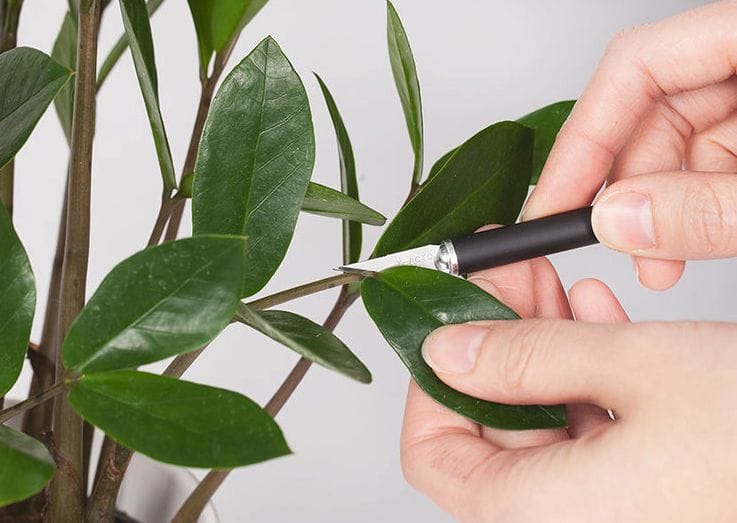Why You Should Add Mycorrhizae To Your Soil Stronger Roots Healthier Plants
When I first introduced mycorrhizae to my garden’s soil, it was like handing a struggling musician a state-of-the-art instrument—suddenly, everything harmonized beautifully. Mycorrhizae, a type of beneficial fungus, form a symbiotic relationship with plant roots, greatly boosting their nutrient uptake and enhancing overall health and resilience. These microscopic allies can transform a mediocre garden into a flourishing ecosystem. But how exactly does this transformation occur, and what are the implications for long-term plant health and soil vitality? Let’s explore the invisible interactions beneath our feet that lead to a visibly thriving garden.
Understanding Mycorrhizae
Mycorrhizae, often referred to as ‘fungus root,’ are naturally occurring fungi that form a symbiotic relationship with plant roots, either by attaching to or permeating them. They play a vital role in understanding soil ecology and plant health.
Within this broad category, there are primarily two types: ectomycorrhizae and endomycorrhizae. Ectomycorrhizae form sheaths around roots and are less common, while endomycorrhizae, which penetrate root cells, are more widespread and generally preferred by garden and crop plants.
It’s crucial to differentiate between these types as their functions and interactions with plant roots vary significantly. This distinction helps in selecting the right kind of mycorrhizal fungi for application, ensuring the best possible plant growth and soil health management.
Benefits for Plants
Through their symbiotic relationships, mycorrhizae greatly enhance plant growth by expanding root systems and improving nutrient uptake. This results not only in healthier plants but also in an ecosystem that supports sustainable agriculture. I’ve witnessed significant improvements in the overall vigor of plants, which in turn boosts their ability to combat stress factors such as drought and soil deficiencies.
Here’s a breakdown of key benefits in a detailed table format:
| Benefit | Description |
|---|---|
| Enhanced Nutrition | Facilitates better absorption of water and essential nutrients. |
| Stress Resilience | Increases plant resistance against environmental stressors. |
| Soil Structure | Improves soil aggregation, fostering a healthier root environment. |
Understanding these benefits has empowered me to manage my garden more effectively, promoting a robust plant community.
Impact on Garden Plants
Building on these benefits, I’ve observed that the robust root systems fostered by mycorrhizae lead to heartier, more resilient garden plants. This enhanced resilience isn’t merely an essential improvement; it’s a profound enhancement of the plant’s overall vitality. With mycorrhizae, my garden plants endure dry spells with less stress and bounce back from pest attacks more vigorously. This symbiosis notably reduces the need for chemical interventions, which is a boon for any gardener aiming for sustainability.
The yield improvements are equally impressive. Plants don’t just survive; they thrive, producing more flowers and fruit. The soil itself transforms, becoming a richer, healthier environment that supports plant growth more effectively. Every season, the benefits compound, leading to a lush, vibrant garden.
Application and Considerations
Before adding mycorrhizae to your garden, it’s important to understand the best practices for application and important considerations.
You should know that the type of mycorrhizae you use matters greatly. For most garden plants, endomycorrhizae are preferable because they penetrate the root cells, enhancing moisture and nutrient absorption more efficiently than ectomycorrhizae.
It’s vital to mix the mycorrhizal inoculant directly into the soil or the planting holes to foster immediate contact with plant roots, which facilitates the colonization process.
Additionally, maintaining the integrity of your soil structure by avoiding excessive tilling helps preserve natural mycorrhizal populations.
Practical Tips and Recommendations
Let’s explore some practical tips and recommendations for incorporating mycorrhizae into your gardening routine.
First, it’s vital to select a high-quality mycorrhizal product. Research brands and read reviews to guarantee effectiveness. I’d recommend mixing mycorrhizae directly into the soil or the planting holes to establish a strong connection with plant roots.
It’s also important to apply it during planting or transplanting to maximize root exposure. Avoid over-tilling your soil as this can disrupt existing mycorrhizal networks. For existing gardens, gently rake the product into the soil surface.
Conclusion
After incorporating mycorrhizae into my garden, the difference was night and day. My tomato plants, once spindly and slow-growing, transformed into robust producers, bursting with vibrant, juicy tomatoes.
It’s clear that these fungi aren’t just beneficial; they’re essential for nurturing a thriving garden. By enhancing root systems and plant health, mycorrhizae reduce the reliance on chemicals, paving the way for more sustainable gardening practices.
So, don’t hesitate to give your plants this natural boost!







